13 Marketing Mistakes, Myths, and Misconceptions to Avoid
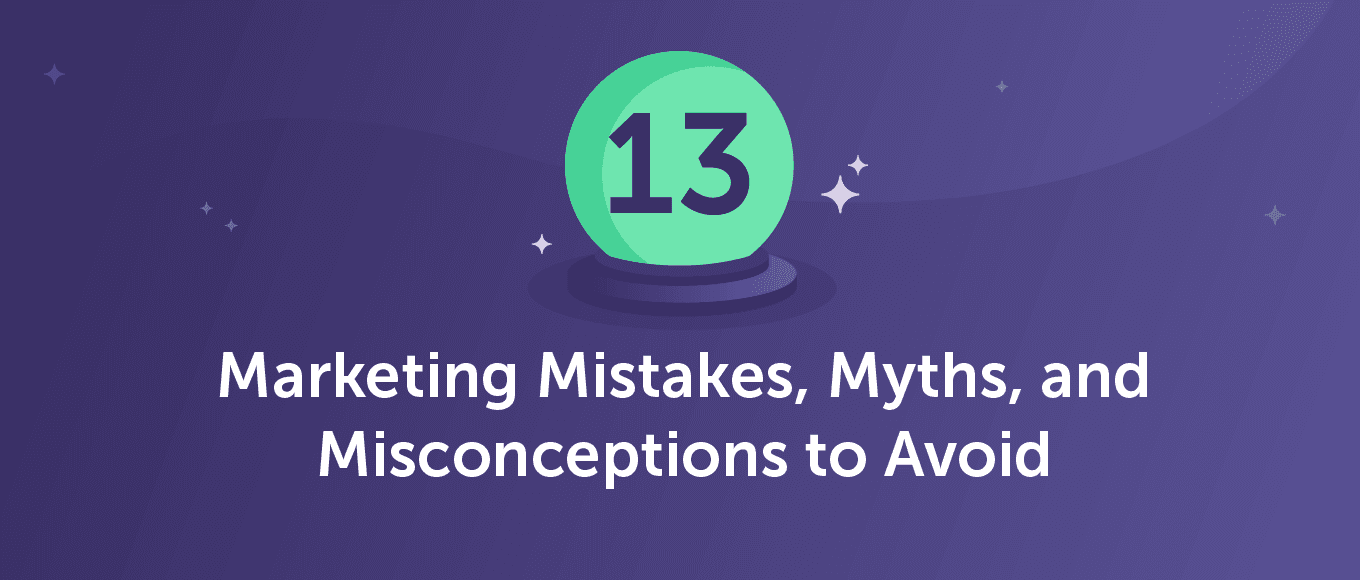 Digital marketing has been around for more than 30 years. It’s old enough to have a house, a car, two kids, and a family dog.
You’d think that by now, digital marketing best practices would be set in stone. But obviously, this couldn’t be further from the truth.
As technology and algorithms evolve, digital marketing strategies change with them. It is this growth that leads to today’s most commonly encountered mistakes, myths, and misconceptions – 13 of which I’ve captured for this post.
Digital marketing has been around for more than 30 years. It’s old enough to have a house, a car, two kids, and a family dog.
You’d think that by now, digital marketing best practices would be set in stone. But obviously, this couldn’t be further from the truth.
As technology and algorithms evolve, digital marketing strategies change with them. It is this growth that leads to today’s most commonly encountered mistakes, myths, and misconceptions – 13 of which I’ve captured for this post.
13 Marketing Mistakes, Myths, and Misconceptions to Avoid by @sujanpatel via @CoSchedule
Click To TweetDownload: How to Learn Any Marketing Skill in 11 Steps
This post dives deep into common mistakes you shouldn't make. But how do you learn the skills required to execute the things you should be doing? Start by reading this brief 14-page guide to developing new marketing skills.- SEO is Dead
- You Need a Huge Budget
- Waiting Until You Have the Right Tools
- Marketing Isn't Measureable
- Always Be Testing
- Everything Should Be Tested
- Social Media Doesn't Drive Revenue
- Mobile Users Don't Make Purchases
- One Negative Review Could Tank Your Company
- If You Build It, They Will Come
- Content Marketing is Too Crowded
- Copying Competitors to Reverse-Engineer Strategies
- Outsourcing Digital Marketing Means You Don't Have to Worry About It
#1: SEO is Dead
Maybe you’ve heard that SEO is dead. Or that content is dead. Or that various link building strategies are dead. Or that PPC is dead. But here’s the thing: foundational practices like SEO don’t die. They evolve. What “dies” are the campaigns of those who can’t keep up with these changes. Don’t believe me? According to Hubspot research, “61% of marketers say improving SEO and growing their organic presence is their top inbound marketing priority.” That’s an awful lot of interest in a “dead” strategy.
#2: You Need a Huge Budget to Run an Effective Marketing Campaign
Yes, it’s true that some marketing channels require higher initial investments. You aren’t going to get far with a $30/month PPC or paid social campaign, for example. But there are still plenty of free or cheap strategies that can move the needle, such as SEO or content marketing, when done in-house. Don’t let the perfect be the enemy of the good. Start where you are, and expand as you’re able to.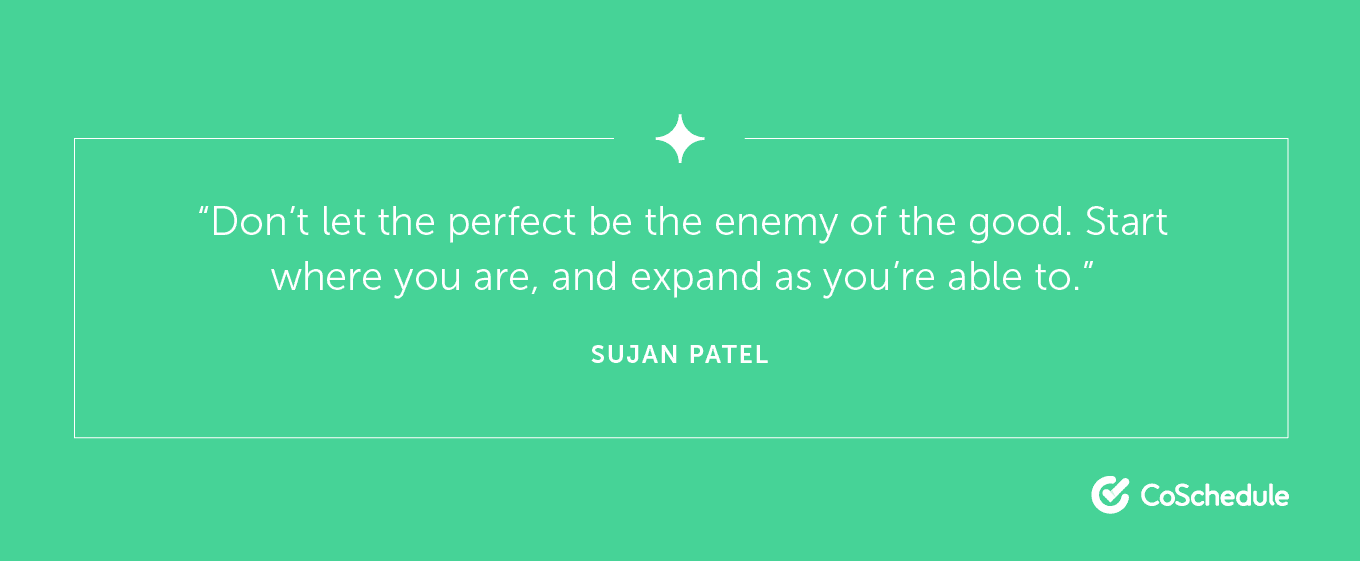
#3: You Shouldn’t Run a Campaign Until You’ve Chosen the Right Tools
When I started the email newsletter for my personal blog, I didn’t have any technology behind it. It was just a plain text newsletter full of helpful information that I sent directly to people who let me know they wanted to hear from me. If I’d have waited until I found the perfect email automation tool, I’d have missed out on the momentum I was able to build by just getting started. You can do the same.#4: Marketing Isn’t Measurable
Although it’s true that marketing benefits like “perceived authority” or “thought leadership” are difficult to quantify, “70% of highly successful marketers have implemented some sort of testing to aid with decision making, whether on an individual or company-wide scale,” according to data shared at VentureBeat. Understanding the qualitative and quantitative data you need to measure will help all marketing teams be more predictable and successful, and ultimately drive more revenue.
Understanding the qualitative and quantitative data you need to measure will help all marketing teams be more predictable and successful, and ultimately drive more revenue.
#5: Always be Testing
I’m going to get some pushback for calling this popular expression a mistake. But although testing is important, you have to have sufficient traffic coming to your site for your tests to mean anything. If you don’t have enough traffic to prove statistical significance (use a calculator like this one to check), your efforts are going to be better spent getting more eyeballs on your site than running more tests. Additionally, often there are activities that move the dial that don’t require testing. Ryan Farley, co-founder of LawnStarter Lawn Care says:“One of our biggest set-back as a company is when we focused a bit too much on A/B testing everything. When in fact there were giant, no brainer opportunities where we didn’t really need to test anything, we just needed to do it” says He mentions “publishing more content on our blog, adding drip campaigns where they were none, and improving obvious bad experiences within the product” as some of these opportunities. Everything is an opportunity cost,” adds Alex Birkett, Sr. Growth Marketer at HubSpot. “A/B testing is my favorite thing in the world to do, but testing every UI change is reserved for juggernauts like Netflix, Booking.com, and Microsoft. They have the traffic to do so, and limiting the risk of design changes is extra important at that scale. Most companies need to swing much bigger to see ROI-worthy gains.”
#6: Everything on Your Website Should be Tested
Today’s technology makes it possible to test the tiniest of changes – like whether a blue #00FFFF button performs better than a blue #008080 button. But is that really going to produce impactful data? It might, but in most cases, you’re going to be better off focusing your testing efforts on big-picture issues that are likely to produce significant results, such as your call to action or landing page layout.#7: Social Media Doesn’t Drive Revenue
According to one survey, “90% percent of social marketers said investing in social media has a direct effect on revenue.”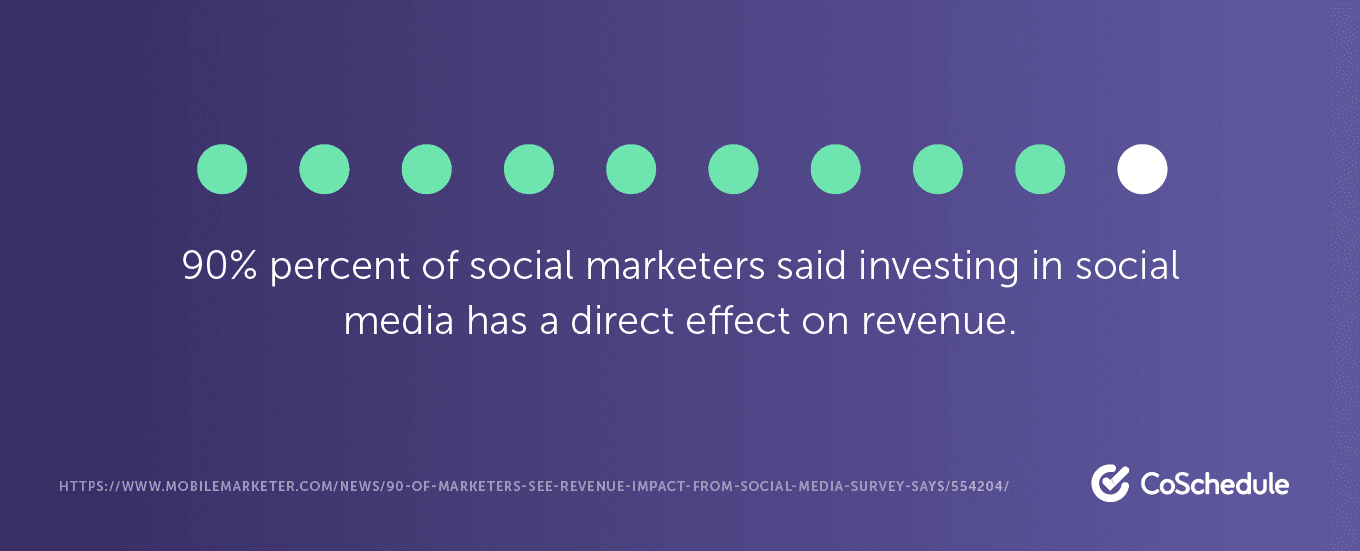 Ultimately, social performance comes down to the type of people you engage and the way you engage them. If your current efforts aren’t producing revenue, it may be your strategies—not social media—that are at fault.
Ultimately, social performance comes down to the type of people you engage and the way you engage them. If your current efforts aren’t producing revenue, it may be your strategies—not social media—that are at fault.
#8: Mobile Users Don’t Make Purchases
This might have been true once upon a time. But these days, according to data shared by OuterBox Solutions, “79% of smartphone users have made a purchase online using their mobile device in the last 6 months,” and “almost 40% of all e-commerce purchases during the 2018 holiday season were made on a smartphone.”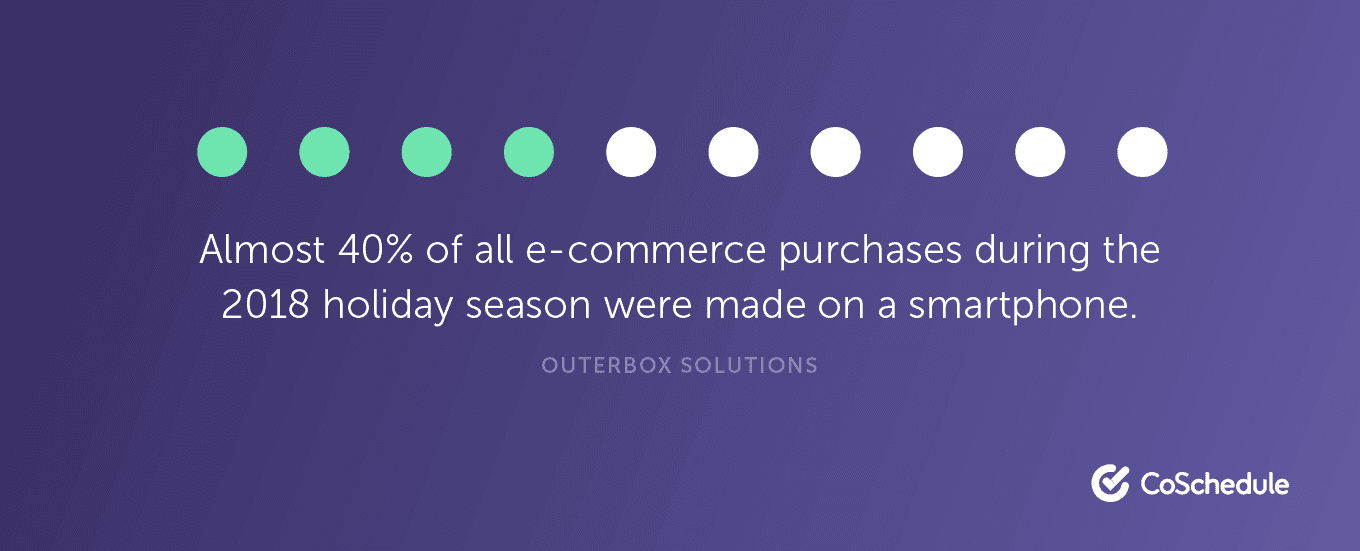 Mobile optimization isn’t just about SEO or user experience. Don’t forget that it can also have a direct impact on your company’s revenue.
Mobile optimization isn’t just about SEO or user experience. Don’t forget that it can also have a direct impact on your company’s revenue.
#9: A Single Negative Review Could Tank Your Company
Thanks in part to Amazon’s fake review problem, “68% of customers trust reviews more when they see a mix of good and bad reviews.”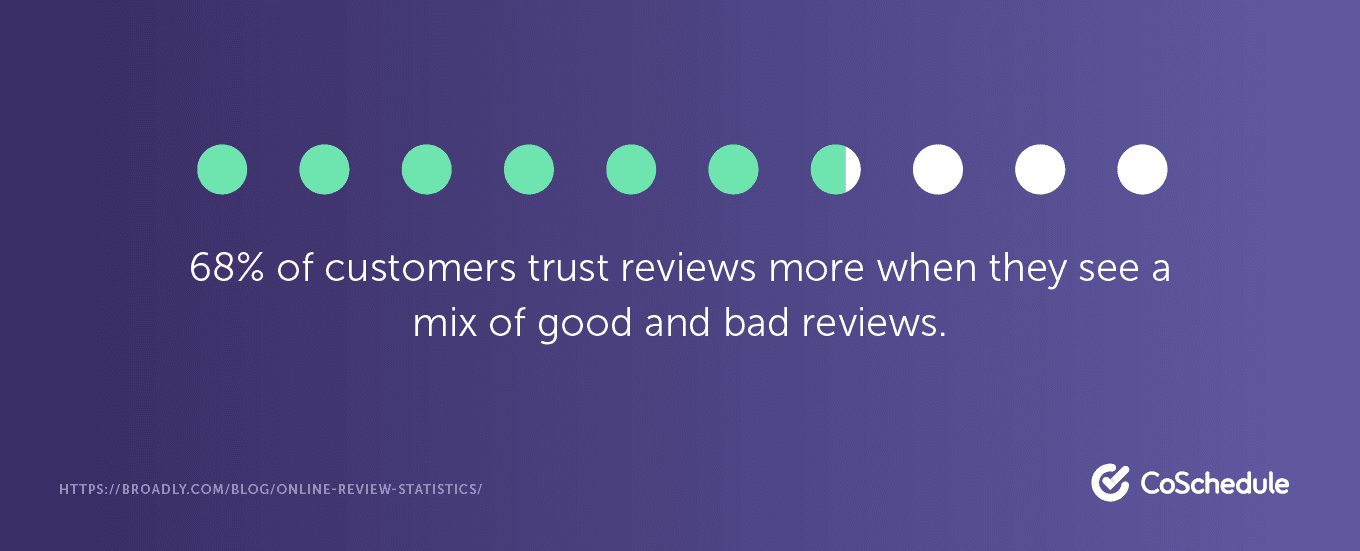 That doesn’t mean you shouldn’t respond appropriately if you do see a negative review come through. It just means that perfection isn’t possible – and customers understand that.
That doesn’t mean you shouldn’t respond appropriately if you do see a negative review come through. It just means that perfection isn’t possible – and customers understand that.
#10: “If You Build It, They Will Come”
This misconception is one that’s obvious on the surface, but surprisingly difficult to correct in real life. We all say we understand that new websites won’t automatically get new visitors or that great content isn’t guaranteed to receive clicks. Yet, after the heavy lifting of website design or content creation are done, few people are putting in the promotional effort needed to drive the results they want to see. So let’s end this one now. “If you build it, they will come,” doesn’t work for website design, traffic acquisition campaigns, content marketing, social media marketing, or any other digital marketing channel. If you want results, you’re going to have to fight for them.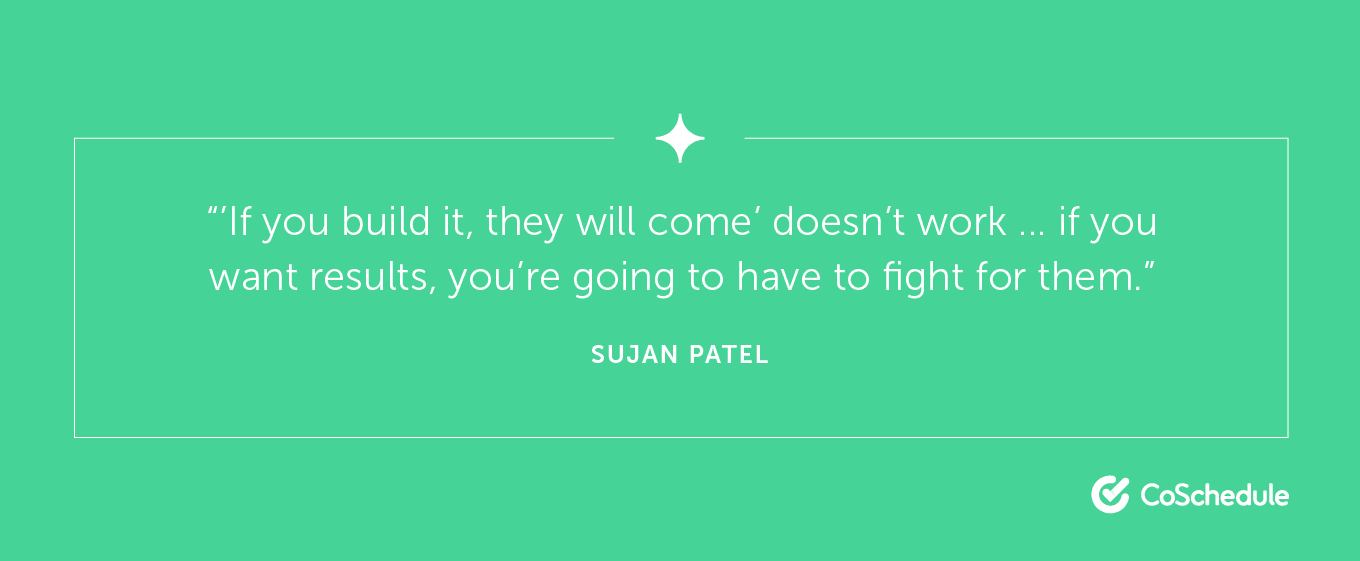
#11: Content Marketing is too Crowded for Your Company to Compete
While it’s true that more content is produced these days than in previous years, opportunity still exists for brands that are willing to elevate their strategies beyond posting a bunch of poorly-written 500-word blog posts. Backlinko’s Brian Dean is a great example that busts this myth to pieces. In a post on his site, Dean shares:“Last year I published this complete guide to mobile optimization. Now I could have written something like: '5 Mobile SEO Tips.' But I knew that comprehensive content had a MUCH better chance of ranking #1 in Google than a short post. And I was right! A few months later, my guide hit the #1 spot for my target keyword. Anyone can compete with the major players if both your on-page and off-page SEO are top notch,” says Adam Enfroy. He launched his marketing blog earlier this year and quickly gained over 100,000 monthly visitors in the competitive marketing niche. “My posts that rank well for highly-competitive terms all have five things in common: they’re long-form (over 4,000 words), match reader intent, formatted properly with H2s and H3s, include the right semantic keywords, and have a good amount of backlinks. SEO tools are so powerful these days, which makes it easier.”
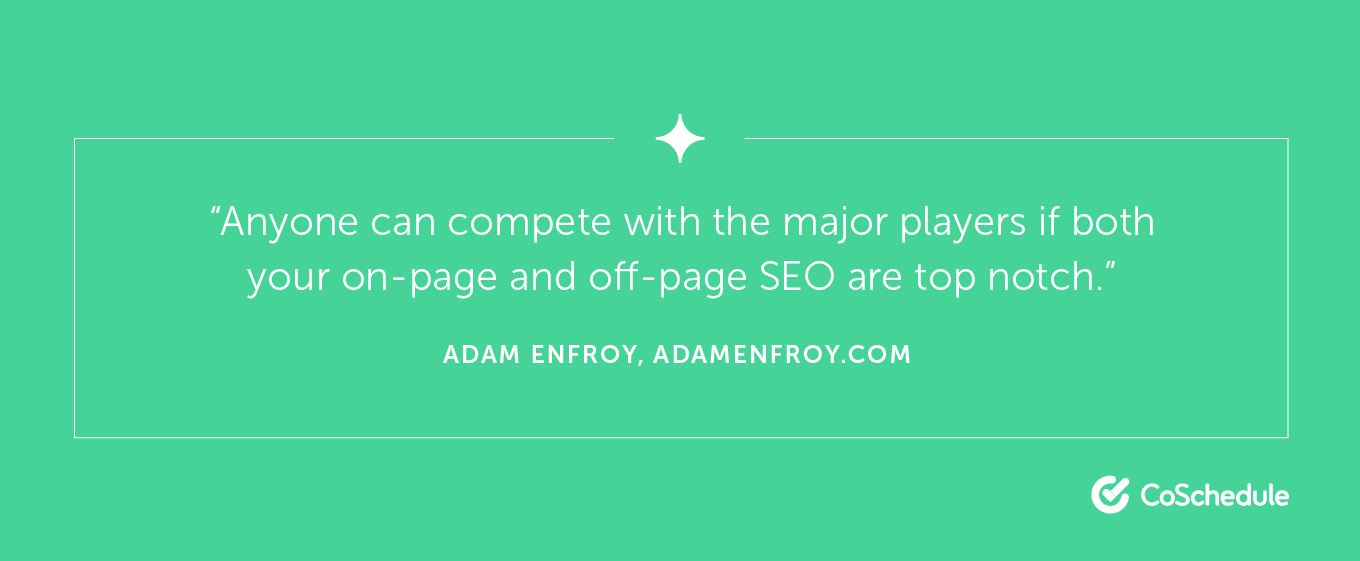
#12: Copying Your Competitors is a Good Way to Reverse-Engineer Your Digital Marketing Campaigns
Monitoring your competitors’ campaigns might give you insight into what’s working. Competitor research is an essential part of any effective marketing plan. But you can’t assume that your competitors a) know what they’re doing, and b) are selling the exact same thing, to the exact same audience, featuring the exact same benefits. If either one of these alternatives isn’t true, you’re basing your campaigns off of bad intel.
Content markter Ryan Robinson has a lot of experience in this realm. He says:
If either one of these alternatives isn’t true, you’re basing your campaigns off of bad intel.
Content markter Ryan Robinson has a lot of experience in this realm. He says:
“Whenever I’m researching competitor articles before starting a new piece for my own blog, I’m extremely careful not to adopt the same structure of other content just because. Instead, I immediately look for opportunities where I can deliver more value than what’s already out there. When I began working on my ultimate guide about how to start a blog, I did hours of research and concluded that in order to compete (and deliver more value to readers), I’d need to include everything from custom graphics to multiple embedded video tutorials, an infographic, illustrative screenshots and more. All that differentiation work has paid off.”Remember though, it’s still fine to use research tools like Ahrefs and SEMrush as a starting point to gather insights and learn more about the space you’ll be competing in—just don’t take their data as law.
#13: Outsourcing Digital Marketing Means you Don’t Have to Worry About It
Outsourcing can be helpful, but you still have to be involved. As an example, in my work, I see plenty of companies calling themselves “SEO consultancies” that make big promises and then either don’t deliver or use grey- or black-hat techniques to get results. As your website grows, there will be a point where you do need to outsource your work. It could be that outsourcing means hiring a part or full-time member of staff. Nico Prins, founder of Launch Space, says:"Working with freelancers or full-time staff requires a different mindset. When my wife launched her website, I systemized the whole business. Putting training systems in place to deal with the inevitable staff turnover helped increase efficiency. I coupled this with a clear monitoring and evaluation strategy. With these systems in place, she’s now in the position where staff manages most of the day to day business operations. This frees up time for her to invest her energy in other projects."If you aren’t aware of what they’re doing because you aren’t involved, you could be damaging your brand’s long-term potential (even if you’re seeing good short-term results).
Guide Your Strategy By Knowing What Not to Do
What other marketing mistakes, myths, or misconceptions have you encountered?Here's how to avoid common marketing mistakes according to @sujanpatel via @CoSchedule
Click To Tweet

